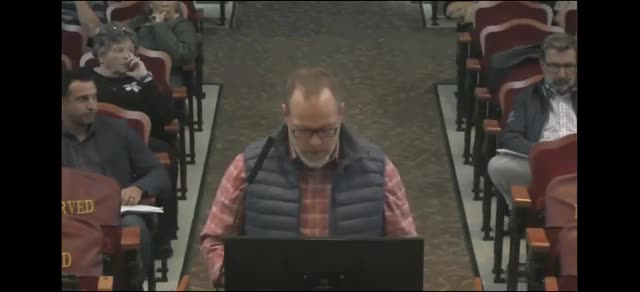Housing Crisis Demands Urgent Action and Innovative Solutions
November 12, 2024 | Albemarle County, Virginia
This article was created by AI summarizing key points discussed. AI makes mistakes, so for full details and context, please refer to the video of the full meeting. Please report any errors so we can fix them. Report an error »

During a recent government meeting, discussions centered on the pressing issue of affordable housing in Albemarle County and the surrounding region. A key speaker emphasized the importance of understanding the historical context of housing policies, particularly the legacy of racial covenants and exclusionary practices that have shaped the current housing landscape. This history has significantly influenced wealth accumulation and residential patterns among various racial groups in the area.
The speaker highlighted that the ongoing supply and demand imbalance is a critical factor affecting housing affordability. Nationally, the housing supply is estimated to lag by 10 to 20 years, leading to increased costs and a significant gap in affordable housing options, particularly for families earning 30 to 50 percent of the area median income. This gap creates a cascading effect, displacing lower-income families as higher-income individuals seek housing.
To address these challenges, the speaker advocated for comprehensive strategies that utilize every available tool to promote affordable housing development. This includes direct subsidies, density bonuses, and policy changes within the comprehensive plan and zoning regulations. The speaker stressed that merely increasing supply is insufficient; targeted interventions are necessary to achieve meaningful affordability.
The meeting also referenced successful initiatives from other jurisdictions, notably Cambridge, Massachusetts, which implemented a 100 percent affordable housing overlay. This innovative approach allows for increased density and expedited approval processes for affordable housing projects, resulting in a significant uptick in units developed. Cambridge's experience, where affordable housing production increased from an average of 40 to 200 units per year post-overlay, serves as a potential model for Albemarle County.
Additionally, the speaker pointed to Charlottesville's unique approach, which began with an affordable housing plan that set clear goals before integrating these objectives into the comprehensive plan and subsequent zoning changes. This structured process may offer valuable insights for local policymakers as they navigate the complexities of affordable housing development.
As the planning commission and board of supervisors move forward with their considerations, the discussions underscore the urgent need for innovative solutions and collaborative efforts to address the affordable housing crisis in the region.
The speaker highlighted that the ongoing supply and demand imbalance is a critical factor affecting housing affordability. Nationally, the housing supply is estimated to lag by 10 to 20 years, leading to increased costs and a significant gap in affordable housing options, particularly for families earning 30 to 50 percent of the area median income. This gap creates a cascading effect, displacing lower-income families as higher-income individuals seek housing.
To address these challenges, the speaker advocated for comprehensive strategies that utilize every available tool to promote affordable housing development. This includes direct subsidies, density bonuses, and policy changes within the comprehensive plan and zoning regulations. The speaker stressed that merely increasing supply is insufficient; targeted interventions are necessary to achieve meaningful affordability.
The meeting also referenced successful initiatives from other jurisdictions, notably Cambridge, Massachusetts, which implemented a 100 percent affordable housing overlay. This innovative approach allows for increased density and expedited approval processes for affordable housing projects, resulting in a significant uptick in units developed. Cambridge's experience, where affordable housing production increased from an average of 40 to 200 units per year post-overlay, serves as a potential model for Albemarle County.
Additionally, the speaker pointed to Charlottesville's unique approach, which began with an affordable housing plan that set clear goals before integrating these objectives into the comprehensive plan and subsequent zoning changes. This structured process may offer valuable insights for local policymakers as they navigate the complexities of affordable housing development.
As the planning commission and board of supervisors move forward with their considerations, the discussions underscore the urgent need for innovative solutions and collaborative efforts to address the affordable housing crisis in the region.
View full meeting
This article is based on a recent meeting—watch the full video and explore the complete transcript for deeper insights into the discussion.
View full meeting
